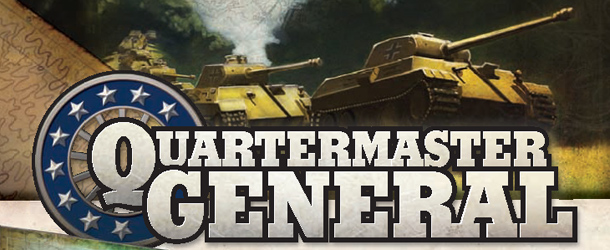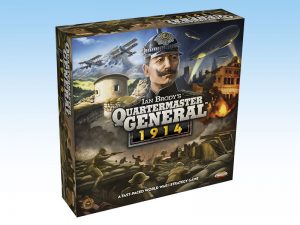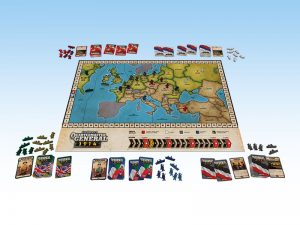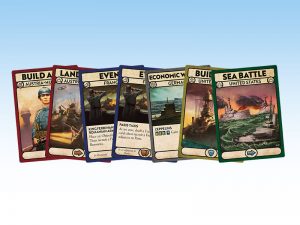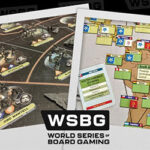Quartermaster General strategy games series by Ian Brody, published by Ares Games, grows with a new release - Quartermaster General: 1914, simulates the WW1 in Europe with card-driven game mechanics reflecting the military, economy, and politics of the time. The game will start to hit the stores in US from April 13th, arriving in other countries in the following weeks. To get ready for its arrival, here we present a preview of the game, originally published in the issue #259 of Game Trade Magazine:
World War I, The Great War, was marked by technological achievement, romance, and the transition to the modern era. It was also remarkable in how success in battle was measured by a brutal calculus that compared the ratio of lives lost by each side. This “War to End All Wars” twisted the ultra-nationalism of the late 19th century into the nihilism of the 20th. After more than four years of human and economic attrition, the war finally ended, more from exhaustion than anything else.
Quartermaster General: 1914 (2nd Edition) uses the same basic system as the award-winning Quartermaster General: WW2, now portraying the First World War in Europe. Ares teamed up with designer Ian Brody to refresh and relaunch this much sought-after title, including an improved board, artwork, and other components.
Quartermaster General: 1914 sets up in three minutes, is taught in 10, and plays in less than two hours. Despite this accessibility, the feel of the game is epic, and there are few decisions without a consequence. 1914 can accommodate two to five players playing on the two historical sides: the Entente Powers vs. the Central Powers. Each of the five powers has a unique deck of cards with which to command its forces, represented by wooden army and navy pieces.
If you have played Quartermaster General: WW2, most of the rules will be familiar, but enough has changed that you’ll certainly want to read the rules first, as the system has been significantly adapted to the setting.
The biggest challenge of designing a World War One game is trying to simultaneously convey a sense of attrition warfare while keeping the action exciting and unexpected.
Similarly to its WW2 predecessor, in 1914, on your turn, you will have a chance to play one card from your hand of seven. Now, however, you will also have a chance to “prepare” one additional card, which means placing it on the table face-down. Prepared cards can either be used in combat or for “attrition”, forcing the opponent to lose cards.
Several different strategies can win you a game in Quartermaster General: 1914.
Economic warfare and attrition are a far more significant part of 1914 compared to the WW2 title; however, players are not forced into any specific strategy, as there are many avenues to victory. While victory points are mostly scored for geographic objectives, the winning team is more often that which has utilized its resources most effectively - often it will be difficult to tell which side is ahead until towards the end, when certain powers (usually Russia) start to see their economy and therefore war effort fail. Gaining ground is difficult and requires coordination among the teammates.
At the top level, you will need to work with your teammates to determine a grand strategy. For example, as the Central Powers, you must decide if Germany will go for a knockout blow against France or Russia, or play defense while Austria takes the Balkans. No matter the Power you play, you have multiple options - but all will fail without coordination with your teammates!
On the tactical level, you will be setting up powerful “combos” to increase the value of your plays. You need to decide for each card if you use it for its game text or prepare it for combat or attrition. You need to prepare a mix of offensive and defensive cards that anticipates both your own and your opponents’ actions!
A game that straddles several genres, Quartermaster General: 1914 appeals to wargamers looking for a grand strategy game playable on a weeknight, as well as euro-gamers who appreciate the style of play. Social gamers enjoy it as a team game - team games have facets of both competitive and cooperative play, providing greater interactivity. Finally, if you are interested in the subject matter, the game offers a wealth of information and is tightly bound to the theme.

